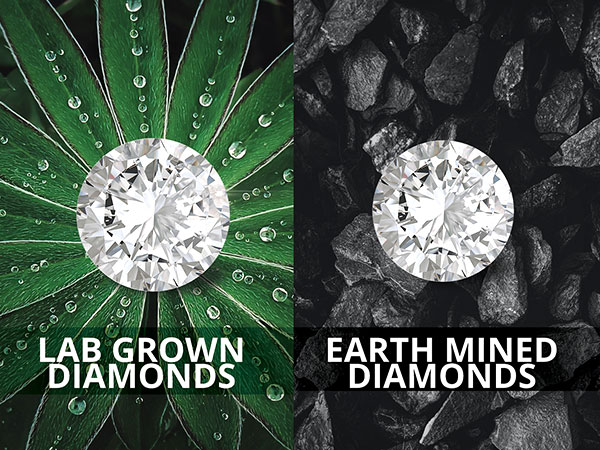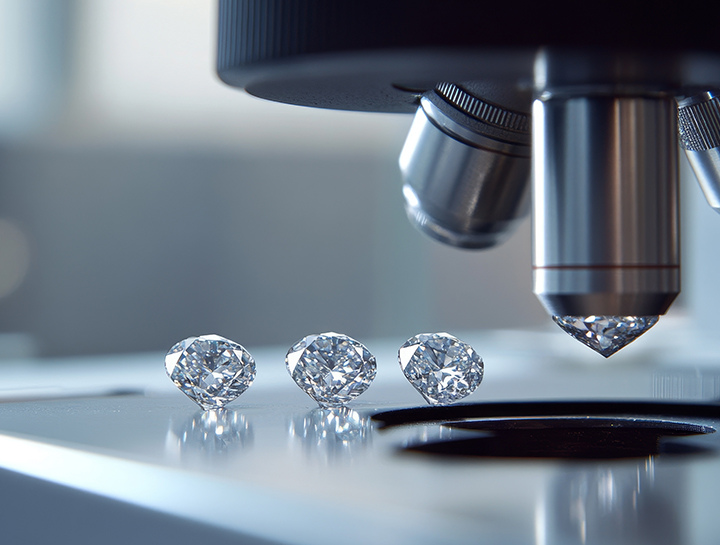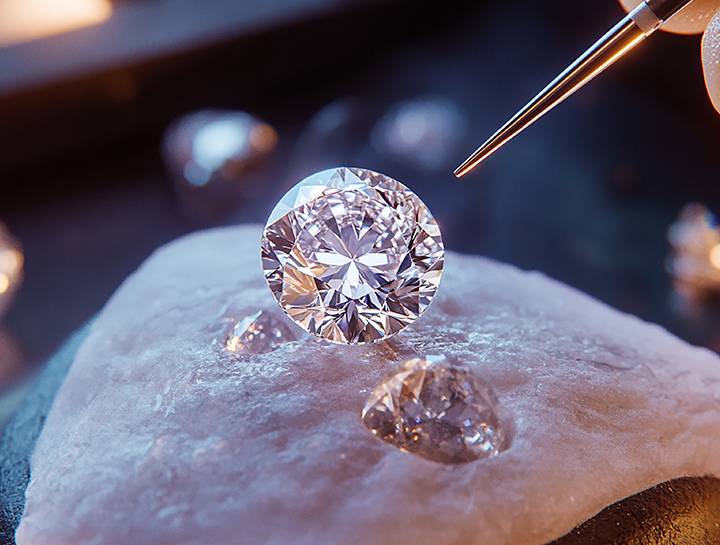
What Are Lab Grown Diamonds?
Lab-grown diamonds, (also referred to as lab-created, man-made, engineered, or cultured diamonds) are produced in carefully controlled laboratory settings using advanced technology that replicates the natural conditions under which diamonds form deep within the Earth's mantle. These diamonds are composed of carbon atoms arranged in the typical diamond crystal structure. As they are made from the same material as natural diamonds, they share identical optical and chemical properties.
How Are Lab Grown Diamonds Made?
Lab-grown diamonds are produced from tiny carbon seeds derived from pre-existing diamonds. Using advanced technology, either through extreme pressure and heat or a process called Chemical Vapor Deposition (CVD), scientists replicate the natural diamond formation process. Over a period of six to ten weeks, a rough diamond is created, which is then cut, polished, and crafted into lab diamond jewelry like earrings, necklaces, or bracelets.
There are two main methods for creating lab diamonds:
High Pressure High Temperature (HPHT): This method simulates the conditions under which diamonds naturally form in the Earth. A large machine applies more than 870,000 pounds per square inch of pressure to carbon material at temperatures ranging from 1300 to 1600 degrees Celsius, producing the lab diamond.
Chemical Vapor Deposition (CVD): In this method, a seed diamond is placed in a vacuum chamber filled with heated hydrogen and carbon-rich gases. At a specific temperature, these gases break down, allowing layers of crystallized carbon to form around the seed and grow into a larger diamond. Some CVD diamonds may also undergo additional pressure and heat treatments after growth.
Visually, there is no difference between natural diamonds, HPHT-grown diamonds, and CVD-grown diamonds. Only scientists, through analysis of specific growth markers, can distinguish between them.

Lab Grown Diamonds vs. Natural Diamonds
Without specialized tools, it's impossible to distinguish between a lab-grown diamond and a natural one—they look identical. The only difference lies in their origin: one forms deep within the Earth, while the other is created in a lab.
Lab-grown diamonds possess the same physical, chemical, and optical properties as natural diamonds, offering the same brilliance, fire, and sparkle. While lab-created diamonds may contain different trace elements compared to natural ones, these differences do not affect their appearance. Only specialized tests can differentiate lab-grown diamonds from natural ones.
Explore the beauty and brilliance of lab-grown diamonds today.
How Are Lab Grown Diamonds Made?
Lab-grown diamonds are produced from tiny carbon seeds derived from pre-existing diamonds. Using advanced technology, either through extreme pressure and heat or a process called Chemical Vapor Deposition (CVD), scientists replicate the natural diamond formation process. Over a period of six to ten weeks, a rough diamond is created, which is then cut, polished, and crafted into lab diamond jewelry like earrings, necklaces, or bracelets.
There are two main methods for creating lab diamonds:
High Pressure High Temperature (HPHT): This method simulates the conditions under which diamonds naturally form in the Earth. A large machine applies more than 870,000 pounds per square inch of pressure to carbon material at temperatures ranging from 1300 to 1600 degrees Celsius, producing the lab diamond.
Chemical Vapor Deposition (CVD): In this method, a seed diamond is placed in a vacuum chamber filled with heated hydrogen and carbon-rich gases. At a specific temperature, these gases break down, allowing layers of crystallized carbon to form around the seed and grow into a larger diamond. Some CVD diamonds may also undergo additional pressure and heat treatments after growth.
Visually, there is no difference between natural diamonds, HPHT-grown diamonds, and CVD-grown diamonds. Only scientists, through analysis of specific growth markers, can distinguish between them.


Lab Grown Diamond Benefits
Lab-grown diamonds are a great alternative to mined diamonds. They are physically identical to natural diamonds, while being more affordable and ethically sourced. Some key advantages of lab-created diamonds include:
Fewer imperfections
Greater affordability
The ability to create rare colors that are difficult to find in nature, making unique and desirable pieces more accessible.
A traceable origin, ensuring they come from responsible sources that avoid unethical treatment of workers and communities.
The HPHT and CVD methods allow for meeting demand without compromising quality or using harmful practices.
